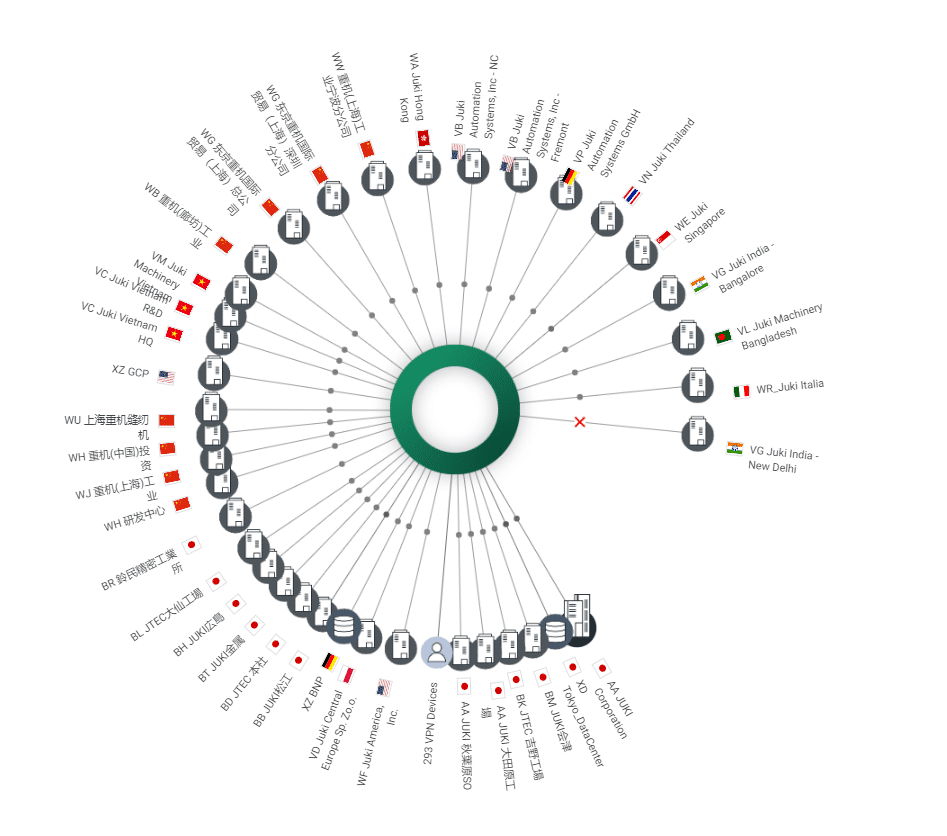Manufacturing
JUKI Ramps Up COVID-19 Telework, Boosts Remote Cloud Performance with Cato

The Challenge: One Network, One Security Solution
With users now working from home, enterprises have another reason to be frustrated with global MPLS. Not only are global MPLS services costly, but they’re also unsuitable for connecting the cloud resources consumed by the legions of remote and mobile users.
The global Internet is of little help; it’s far too unpredictable. And having sites in China only limits the number of connectivity options. What then can an IT leader do to eliminate the high cost of MPLS while still meeting the needs for predictable, global secure connectivity that will meet the necessary regulations?
“To get the best performance we needed to connect all our locations to a single network with uniform security, including locations that hadn’t been connected previously.”
This was precisely the challenge facing Yoshiaki Kushiyama, Senior Manager of Information Systems for JUKI Ltd. The global manufacturer of precision equipment and needles for industrial and household sewing machines needed to deliver affordable, global access to Microsoft Office 365. “We had a plan to deploy Office 365 to the entire organization,” he says. “To get the best performance we needed to connect all our locations to a single network with uniform security, including locations that hadn’t been connected previously.”
Cost and regulatory compliance were of big concerns. “We sought a solution that would cost as little as possible to deploy and maintain and we needed to comply with stringent VPN regulations in China,” says Kushiyama.
Achieving these goals, especially uniform security, was a challenge. “We didn’t have a clear understanding of what security equipment was installed at each location and who controlled what nor the bandwidth and connectivity available at each,” says Kushiyama. “We were also concerned about cloud security since we were deploying Office 365. We had to ensure that the Microsoft applications would be accessible from the company network only.”
Kushiyama had also heard that Office 365 deployment could increase bandwidth requirements up to five or ten times. “We wanted centralized network and security visibility, with the ability to upgrade bandwidth quickly if needed.”
JUKI Seeks SD-WAN Solution, Chooses Cato
Kushiyama knew that SD-WAN was a technology worth exploring when it came to deploying Office 365. “I had heard that SD-WAN, with its flexible deployment and management, was the right technology to get the best performance out of Office 365,” says Kushiyama, “so I started looking for SD-WAN solutions from vendors familiar with Office 365.”
Kushiyama contacted an SD-WAN vendor recommended by a colleague and got an introduction to that product. Two months later, Kushiyama was introduced to Cato. “Listening to the company reps, I found Cato’s solution immediately appealing, so I compared both solutions carefully,” says Kushiyama.
He was a little wary because at the time, Cato hadn’t been deployed by many Japan-based organizations. “When comparing all the capabilities, however, Cato’s had an overwhelming advantage and met all our requirements, so I was eager to deploy it and promoted it to senior management,” says Kushiyama. “They too were worried about the lack of a track record in Japan, but eventually they approved the Cato solution.”
“Cato offered an environment where remote work could be done immediately and successfully using Office 365, letting employees do the same work that they did in the office,” says Kushiyama. “It also let us collaborate face-to-face easily with Microsoft Teams. This gave Cato a great reputation with senior management.”
COVID-19 hit in the middle of the evaluation process and Cato’s fast, easy home and mobile VPN deployment helped to tip the scale in the company’s favor. “Cato offered an environment where remote work could be done immediately and successfully using Office 365, letting employees do the same work that they did in the office,” says Kushiyama. “It also let us collaborate face-to-face easily with Microsoft Teams. This gave Cato a great reputation with senior management.”
Kushiyama was also impressed that with Cato, the same consistent level of security could be maintained for both the corporate WAN and the Internet. The use of the Internet for WAN connectivity rather than a dedicated line would enable JUKI to keep its network costs down.
Cato Delivers Easy Deployment, Fast Performance, Low Cost
Deployment of Cato across all JUKI’s global locations was fast and easy, requiring the installation of a simple Cato socket at each. “I went around with another person to each location to deploy the solution,” says Kushiyama.
Cato connects all global enterprise network resources — including branch locations, mobile users, and physical and cloud datacenters — into a single secure, global, cloud-native network service. With all WAN and Internet traffic consolidated in the cloud, Cato applies a suite of robust security services to protect all traffic, including anti-malware, next generation firewall, and IPS.
Connecting a location to Cato is just a matter of installing the simple preconfigured Cato Socket appliance, which links automatically to the nearest of Cato’s more than 60 globally dispersed points of presence (PoPs). At the local PoP, Cato provides an onramp to its global backbone and security services. The backbone is not only privately managed for zero packet loss and 5 9’s uptime, it also has built in WAN optimization to dramatically improve throughput. Cato monitors network traffic and selects the optimum path for each packet across the Cato backbone. JUKI’s 2742 mobile users run across the same backbone, benefiting from the same optimization and security features.
Cato’s mobile VPN capabilities were the most immediate benefit of the solution for JUKI, allowing employees to work at home with the same performance, and security they had at the office. “Before Cato, the head office had no system for remote working at all,” says Kushiyama. “COVID-19 forced us to find one. With Cato all we needed to do was increase our VPN license and have each group company that was sending staff home install the clients. The move to remote work was so quick and smooth.”
“The big difference between Cato and other solutions is the integration of network management and security”
Fast connectivity among all the company’s locations was also a major benefit, together with the ability to monitor network connectivity and security from a single console. “The big difference between Cato and other solutions is the integration of network management and security,” says Kushiyama. “It’s great to be able to grasp and respond to both network status and security at the same time on a single screen.”
Kushiyama also liked that he could increase network bandwidth easily as Office 365 use grew. “The more we use Office 365 the more bandwidth we need,” he says. “With Cato we just ask for more bandwidth and get it almost immediately. There’s no equipment or infrastructure to upgrade.”

Kushiyama and his team have also improved Juki’s security by reducing dwell time and the number of malware infections. “The malware detection rate at the head office has dropped dramatically,” he says. “If there is an infection at a location, it’s visible at the head office so we can alert them and deal with it quickly.”
As for cost savings, Kushiyama estimates that cost Cato provided a return on investment (ROI) that was five to ten times higher that of MPLS.
In all, JUKI’s switch to Cato has been a great success. Says Kushiyama, “The combination of Cato and Office 365 made all the difference in JUKI’s ability to handle the COVID 19 pandemic and communicate across all company locations and employee homes as if we’re all in the same office.”









